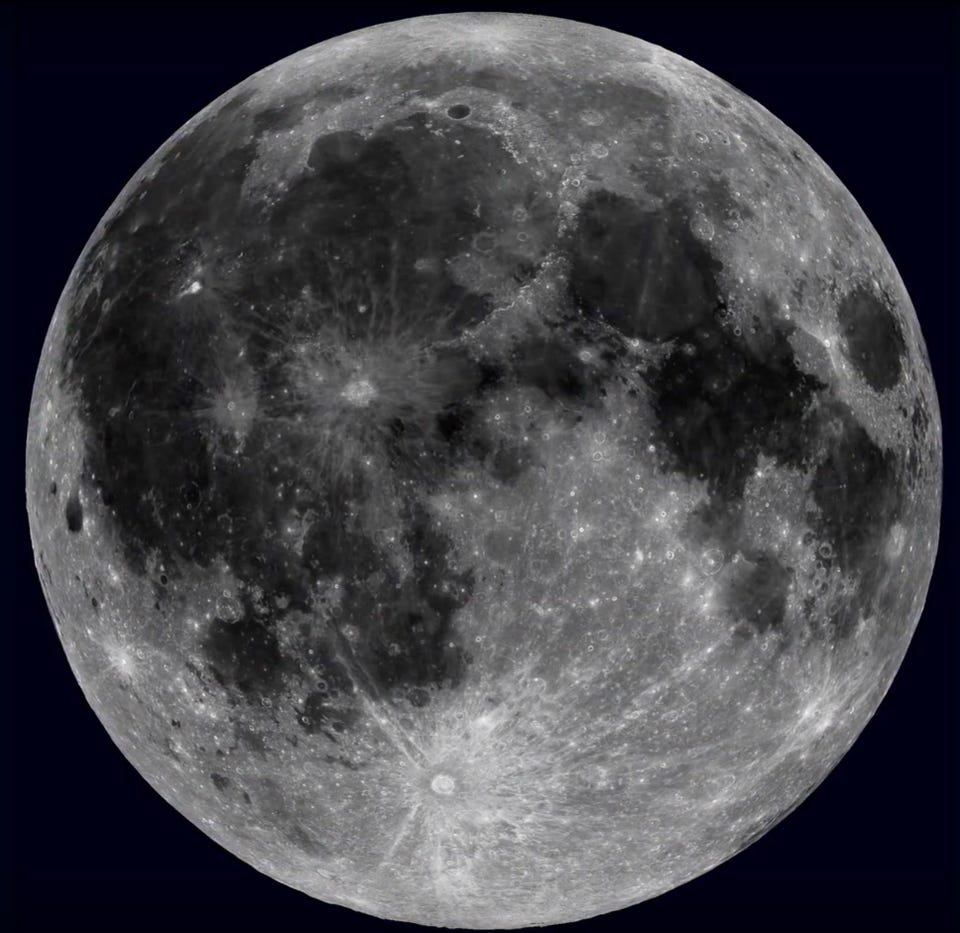Science NASA’S LRO Spacecraft Detects A Lunar Lava Pit That Promises Room Temperatures Bruce Dorminey Contributor Opinions expressed by Forbes Contributors are their own. I cover aerospace, astronomy and host The Cosmic Controversy Podcast. New! Follow this author to improve your content experience.
Got it! Jul 27, 2022, 03:56am EDT | New! Click on the conversation bubble to join the conversation Got it! Share to Facebook Share to Twitter Share to Linkedin The near side of Earth’s Moon, as seen using data from cameras aboard NASA’s robotic Lunar . . .
[+] Reconnaissance Orbiter spacecraft. Credit: NASA/Goddard Space Flight Center/Arizona State University NASA’S Lunar Reconnaissance orbiter (LRO) spacecraft has found a nearside pit crater in the Moon’s Sea of Tranquility with room temperatures. A thermal imager onboard LRO found that a 328-foot–deep depression about the length and width of a football field has shadowed regions that maintain a constant, pleasantly cool temperature of some 63 degrees Fahrenheit.
The hope is that future astronauts will be able to use such pits as refuges from the lunar surface’s extreme temperatures which can fluctuate between 260 degrees Fahrenheit during the lunar day and cool to minus 280 degrees Fahrenheit during the lunar night. First discovered on the Moon in 2009, such pits, subsurface lava tunnels and caves could also offer some protection from cosmic rays, solar radiation and micrometeorites, says NASA. “About 16 of the more than 200 pits are probably collapsed lava tubes,” Tyler Horvath, a UCLA doctoral student in planetary science and the lead author of a paper detailing the research in the journal Geophysical Research Letters , said in a statement.
Horvath processed data from the spacecraft’s Diviner Lunar Radiometer Experiment – a thermal camera – to find out if the temperature within the pits diverged from those on the surface, says NASA. Spectacular high Sun view of the Mare Tranquillitatis pit crater revealing boulders on an otherwise . .
. [+] smooth floor. Image is 400 meters wide, north is up, NAC M126710873R.
Credit: NASA/GSFC/Arizona State University. Recommended For You 1 New Research Finds A Connection Between Domestic Violence And These Two Personality Disorders More stories like this Fewer stories like this 2 This Scientist Helps Andean Forests And Ecuador’s Women In STEM More stories like this Fewer stories like this 3 Exceptional Fossil Preservation Suggests That Discovering Dinosaur DNA May Not Be Impossible More stories like this Fewer stories like this “The pit’s thermal environment is more hospitable compared to anywhere else on the Moon, with temperatures varying minimally around 63 degrees Fahrenheit wherever the Sun does not shine directly,” the authors write. The Tranquillitatis pit is located at a near-equatorial latitude of 8.
334° North and is by far the warmest location during the lunar night, the authors note. But once inside the pit, the further away from the actual opening and on into a potential cave or lava tube system, the more stable the temperatures become, Horvath told me. Would such pits also protect the astronauts from high-energy radiation? Absolutely, high energy light (such as X-ray or Gamma Rays) and high energy particles (alpha and beta particles) cannot penetrate that deep into the lunar surface, says Horvath.
A cave stemming from the Tranquillitatis Pit appears to be 60 meters below the surface, giving ample room for the rock to keep you safe, he says. Would setting up a habitat inside a shaded lava pit crater save energy? Maintaining the heat that humans and robots need to survive costs a lot of energy, and during the day we are easily able to harness the Sun’s energy to regulate temperatures, says Horvath. During the two-week lunar night, however, we must either produce it ourselves or have enough stored to survive for two weeks, he says.
By placing your habitat in a lunar cave, you almost entirely remove the need to regulate temperature, and it brings your energy requirements down drastically, says Horvath. What’s next? Originally, this research was in support of MoonDiver, a proposed lunar rover mission which was going to rappel down the walls of the Tranquillitatis pit and take measurements of the distinct lava flows in the pit wall, says Horvath. Hopefully, MoonDiver will be selected the next time NASA asks for mission proposals, he says.
Follow me on Twitter or LinkedIn . Check out my website or some of my other work here . Bruce Dorminey Editorial Standards Print Reprints & Permissions.
From: forbes
URL: https://www.forbes.com/sites/brucedorminey/2022/07/27/nasas-lro-spacecraft-detects-a-lunar-lava-pit-that-promises-room-temperatures/
